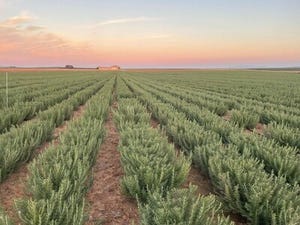Researchers to examine how plants respond to touch
Wageningen researchers will lead a large-scale research project into the sense of touch in plants over the next decade.
April 23, 2024

Touch is not exclusive to humans and animals. Plants also sense and respond to touch. For instance, the shameplant Mimosa pudica folds its leaves when touched, the carnivorous Venus flytrap snaps its leaves shut upon feeling its prey, and the tendrils of climbing plants curl around as soon as they feel support. All plants possess some form of sense of touch. With the recent grant, scientists from seven universities will investigate this in detail.
Scientific research into the sense of touch in plants could greatly boost agriculture. Plants, including food crops, are constantly threatened by pests and infections. The first step in an attack often involves physical contact: when pathogens like nematodes attack a plant, they forcefully pierce through its tough cell walls. "Once we understand how the plant perceives that force and activates its defense, we can manipulate it," says Joris Sprakel, professor of mechanobiology. For example, by teaching the plant to distinguish between threats and harmless stimuli. This could potentially enhance crop protection against diseases and reduce the use of pesticides.
Furthermore, knowledge of touch sensitivity also offers opportunities for new breeding techniques, including synthetic seeds. In this process, scientists encapsulate modified pieces of the mother plant in a gel that develops into an exact replica of the mother. This is useful when the mother plant possesses precisely the right traits (such as good fruits or defensive compounds). However, synthetic seeds have a drawback: they lack a protective seed coat. And that is a big disadvantage, according to Sprakel. "The seed coat protects the interior from drying out and signals when it is time to germinate," he explains. With knowledge of the forces between the seed coat and the inside of the seed, scientists can potentially create a synthetic coat for artificial seeds—a major gain for the seed sector.
Exact genetic copies, or clones, of plants can also be made in another way: via tissue culture. This is a widely used method in laboratories and breeding companies, where researchers allow individual cells or small pieces of a plant to grow directly into a new specimen. Although this method has been used for a century, it still does not work optimally. The process almost always requires additional hormones and other signaling molecules.
The Wageningen scientists suspect that these cells lack context. "Normally, cells in tissues press against each other," explains Weijers. But this mechanics has largely been overlooked in tissue culturing during breeding and propagation of plants.
Therefore, the researchers aim to mimic those forces by growing the cells in new, specially developed materials. "That way we trick the cells," Sprakel adds. "They think they are sending neighboring cells; we expect this will help them grow better without additional hormones."
To develop these applications, researchers must first understand how plants precisely respond to forces. They expect to gather a significant portion of this fundamental knowledge over the next five years. Subsequently, they will increasingly focus on applying that knowledge in tissue culture, synthetic seeds, and crop disease protection. Achieving all this requires extensive research: the 10-year project will host 57 researchers.
"We will use eighty percent of the budget to recruit and train young researchers (Ph.D. students and post-docs)," says Weijers. Because the project connects biology, physics, chemistry, and materials science, it offers a unique opportunity for young researchers to engage in interdisciplinary work, rather than focusing on a single field.
You May Also Like



